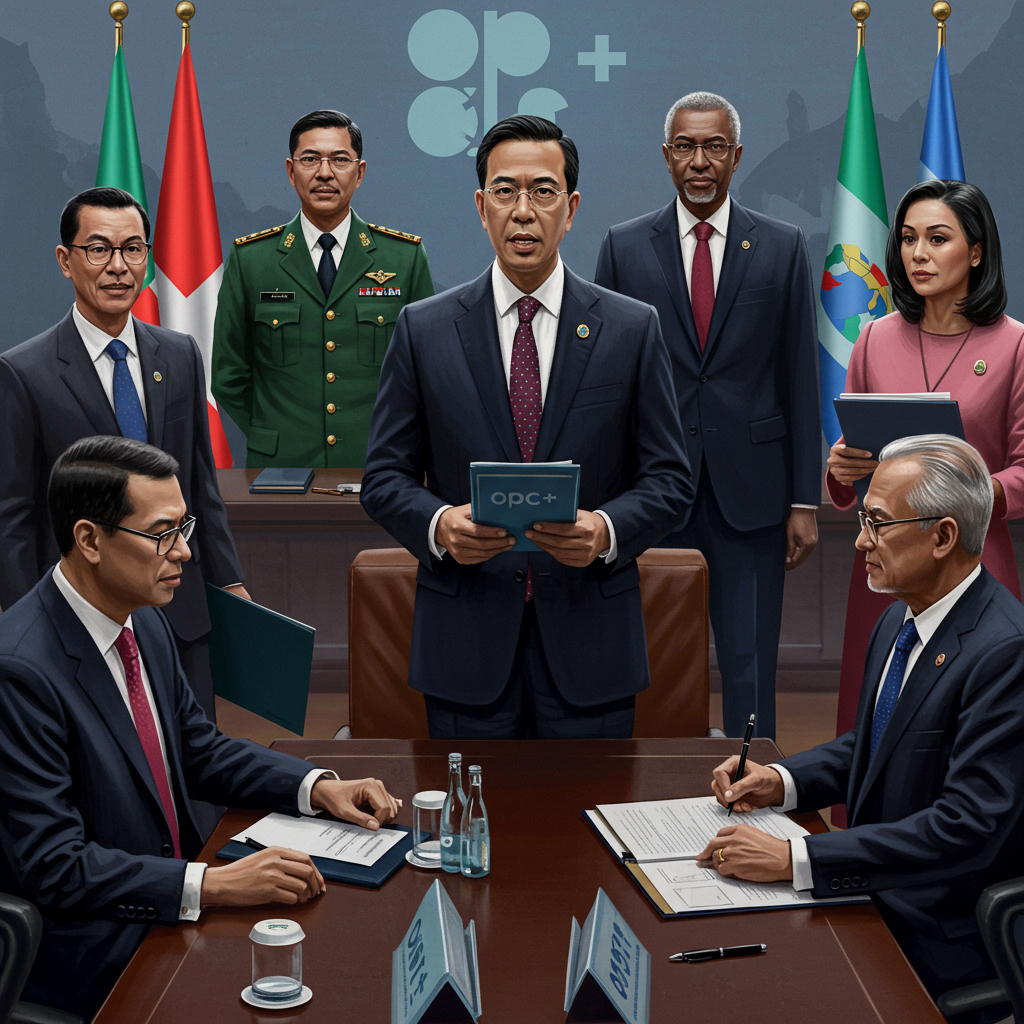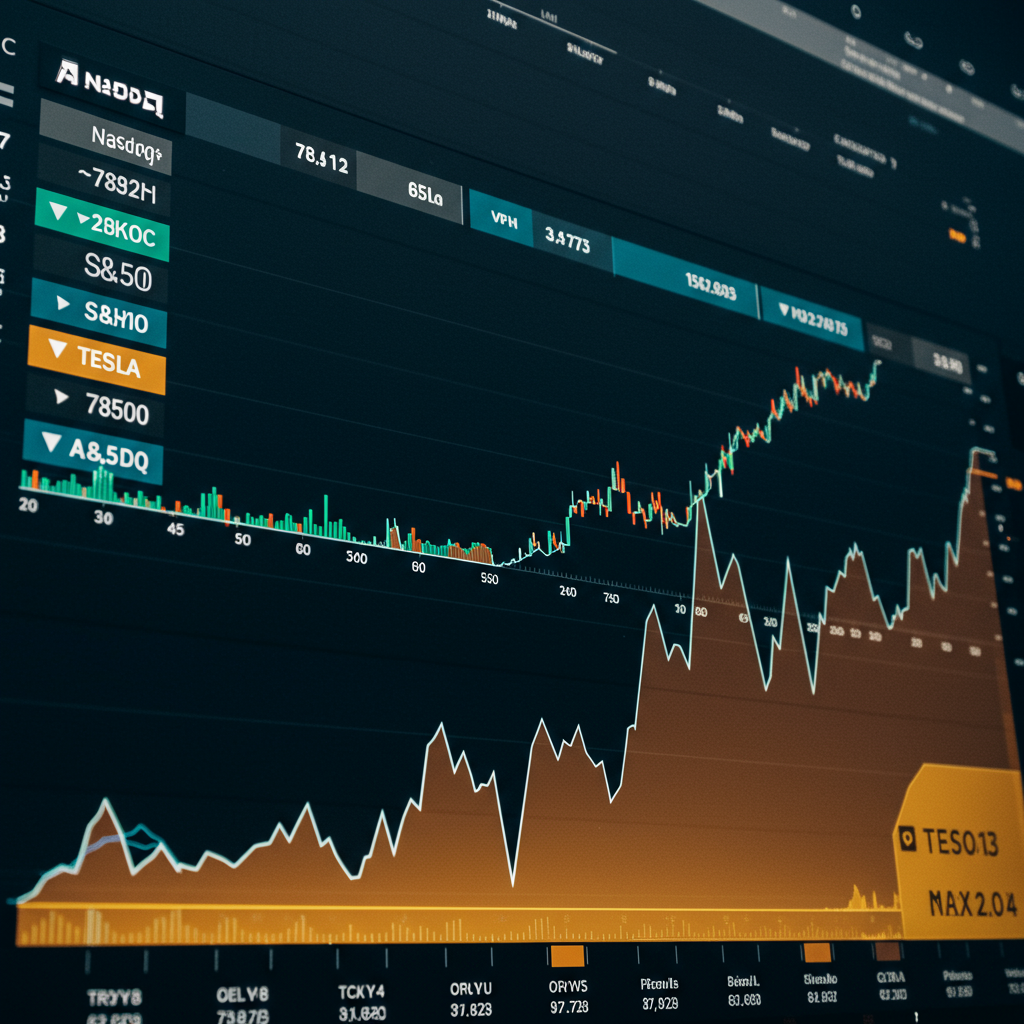The global energy landscape just shifted. In a move that surprised many market watchers, a key group within the OPEC+ alliance has agreed to significantly boost crude oil production for august 2025. This accelerated supply increase, exceeding prior expectations, signals a complex balancing act by the world’s leading oil producers with potential ripple effects on global prices and market dynamics.
Eight influential nations within the broader OPEC+ coalition finalized plans over the weekend to collectively increase their daily oil output by a substantial 548,000 barrels. This decision came after a digital meeting and represents a quicker pace of production return than analysts and traders had initially anticipated for August. Previously, the group had settled on adding 411,000 barrels per day in each of May, June, and July, a step up from the 137,000 bpd pace seen in April.
Unpacking the August Production Boost
The subset of countries involved in this latest agreement includes oil heavyweights Saudi Arabia and Russia, alongside Algeria, Iraq, Kazakhstan, Kuwait, Oman, and the United Arab Emirates. These eight producers have been managing a series of voluntary supply adjustments in addition to the wider OPEC+ policy.
Crucially, the August hike is part of a planned strategy to gradually unwind some of the production cuts implemented earlier. Two primary sets of voluntary cuts have been in effect:
A larger cut totaling 1.66 million barrels per day remains in place until the end of 2026.
A separate reduction of 2.2 million barrels per day was in effect until the end of the first quarter of 2025.
The current increase is directly related to accelerating the return of the 2.2 million bpd that began unwinding from April 1, 2025. The decision to raise output by 548,000 barrels for August is a notable jump in pace, demonstrating the group’s current posture towards supply management.
Why the Accelerated Increase Now?
According to the official statement from the OPEC Secretariat, the decision to significantly raise August output by 548,000 barrels stems from positive indicators. They cited a “steady global economic outlook” combined with “current healthy market fundamentals,” specifically highlighting “low oil inventories” as justifications for adding more barrels to the market.
However, analysis from external experts suggests several other driving factors behind this accelerated pace. Some analysts point to a strategic pivot by OPEC+ leaders, particularly Saudi Arabia, aiming to regain market share potentially lost to rivals like US shale drillers. This perspective suggests a potential “war for market share” is taking precedence over aggressively propping up prices at this moment.
Another contributing factor could be the desire to capitalize on stronger seasonal demand during the northern hemisphere’s summer months. Peak summer fuel demand presents an opportunity for producers to increase sales volumes. Some delegates also indicated the move could partly serve to pressure members who have previously overproduced their quotas. By accelerating the overall return, there’s an opportunity to enforce “compensation” cuts, where past overproducers must forego their share of new increases. Kazakhstan was specifically mentioned by some as needing to compensate.
Market Reaction and Future Outlook
Leading up to the announcement, oil prices had seen brief support from factors like the seasonal summer demand spike and geopolitical tensions in the Middle East. For instance, a recent, albeit short-lived, conflict between Israel and Iran caused a temporary price surge due to fears of supply disruptions, particularly via the Strait of Hormuz.
Despite these brief boosts, oil prices have been trading significantly below their highs seen earlier in 2025 and substantially lower than peak levels reached after the 2022 Ukraine war. At the close of the session just before the August hike news, oil futures settled with September Brent contract near $68.30 per barrel and the August WTI contract near $66.50 per barrel. While slightly up for that week, prices face significant downward pressure.
Many analysts believe the market had already largely priced in some level of production increase from OPEC+. While the 548,000 bpd was larger than expected, it aligned with indicators suggesting low current inventories. However, the forward outlook appears less bullish. Factors contributing to bearish sentiment include global demand concerns driven by a slowing global economy and less robust growth in major importers like China. Ongoing uncertainty around US trade policy, including potential tariffs, also adds volatility.
Crucially, the accelerated return of OPEC+ barrels coincides with rising production elsewhere, particularly in the Americas (US, Guyana, Canada, Brazil). This combination, according to analysis from the International Energy Agency (IEA) and major banks like JPMorgan and Goldman Sachs, suggests markets are headed for a substantial supply surplus later in 2025. Some forecasts even anticipate prices potentially sinking towards $60 a barrel or lower in the fourth quarter. Geopolitical risks, while still present, seem less potent as a sustained price driver for now.
The Nuances: Supply vs. Reality
An important nuance often overlooked in headline figures is the distinction between the announced production increase and the actual volume of oil that reaches the market. Historically, OPEC+ has sometimes produced below its stated targets due to various factors, including technical issues or compliance challenges.
In this instance, the push for compensation cuts from members who overproduced in the past could mean the effective supply boost in August is less than the headline 548,000 bpd. Saudi Arabia, eager to bring its idled capacity back online, is reportedly pressing countries like Kazakhstan to adhere strictly to compensation schedules, potentially reducing their share of the new increase.
This situation highlights the delicate balancing act faced by OPEC+ members. On one hand, they desire higher sales volumes to support national budgets (Saudi Arabia faces a soaring deficit; Russia navigates economic pressure related to the Ukraine war). On the other hand, increasing supply too quickly risks depressing prices, undercutting that very goal. Lower prices also impact non-OPEC+ producers; a recent survey indicated US shale executives are planning to drill fewer wells due to current price levels and trade uncertainty.
What’s Next? The Road Ahead for OPEC+
The decision for August sets the stage for the alliance’s upcoming meeting. OPEC+ members are scheduled to convene again on August 3rd to determine production levels for September.
The group has maintained that its approach to unwinding cuts is flexible and market-dependent. While accelerating the pace now, they have the option to pause or even reverse increases if evolving market conditions necessitate adjustments to support stability. The August decision appears driven by a mix of stated market health indicators, underlying strategic goals like market share recovery, and internal alliance dynamics. The coming months will reveal how this increased supply interacts with global demand and non-OPEC+ production, testing the market’s ability to absorb the additional barrels against the backdrop of looming surplus forecasts.
Frequently Asked Questions
What is the specific amount of oil production OPEC+ agreed to add in August 2025?
A subset of eight OPEC+ nations agreed to increase their collective crude oil production by 548,000 barrels per day for August 2025. This amount was larger than the 411,000 bpd increment seen in the preceding months (May, June, July) and exceeded what most market analysts had anticipated for August.
Why did this OPEC+ group accelerate their oil output increase beyond previous plans?
The group officially cited a “steady global economic outlook,” “healthy market fundamentals,” and “low oil inventories” as reasons. However, external analysis suggests motivations like a strategic push to regain market share from competitors like US shale, capitalizing on peak summer demand, and enforcing compensation requirements for members who previously overproduced relative to their quotas.
How might the larger OPEC+ production increase impact global oil prices in the coming months?
While the immediate impact saw prices briefly boosted but settle lower, the larger-than-expected August increase contributes to forecasts of a potential global supply surplus later in 2025. Combined with slowing global demand, rising non-OPEC+ supply, and economic uncertainties, this could put downward pressure on prices. Some analysts predict prices might fall towards $60 per barrel or lower in the fourth quarter.




